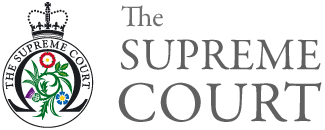Harpur Trust (Appellant) v Brazel (Respondent)
[2022]
UKSC 21 On appeal from: [2019] EWCA Civ 1402
Date:20 July 2022
Justices
Lord Hodge, Lord Briggs, Lady Arden, Lord Burrows, Lady Rose.
Background to the Appeal
This appeal concerns the calculation of annual leave and holiday pay entitlements for workers who work for varying hours during only certain weeks of the year but have a contract throughout that year (“part–year workers”).
The Respondent, Ms Brazel, is a music teacher at a school run by the Appellant, the Harpur Trust. Ms Brazel works a variable number of hours each week and is only paid for the hours that she teaches during term time.
It is accepted by the Harpur Trust that Ms Brazel is a “worker” within the meaning of the Working Time Regulations 1998 (“the WTR”). This entitles her to 5.6 weeks of paid annual leave. She takes this leave during the school holidays, but because she is not required to work at all during the school holidays, in practice there are more than 5.6 weeks each year in which she does not work at all.
Before September 2011, Ms Brazel’s holiday pay for the 5.6 weeks was determined by calculating her average week’s pay in accordance with section 224 of the Employment Rights Act 1996 (“the 1996 Act”) and multiplying that by 5.6. At the relevant time section 224 defined a “week’s pay” as the amount of a worker’s average weekly pay in the period of 12 weeks ending with the start of their leave period, ignoring any weeks in which they did not receive any pay (“the Calendar Week Method”).
From September 2011, however, the Harpur Trust changed its calculation method. In line with Acas guidance (now re–written), they calculated Ms Brazel’s hours worked at the end of each term, took 12.07% of that figure and then paid Ms Brazel her hourly rate for that number of hours as holiday pay (“the Percentage Method”). 12.07% is the proportion that 5.6 weeks of annual leave bears to the total working year of 46.4 weeks. The Harpur Trust therefore treated Ms Brazel as entitled to 12.07% of her pay for the term, reflecting only the hours she actually worked.
The effect of this change was that Ms Brazel received less holiday pay. She brought a claim before the Employment Tribunal for unlawful deductions from her wages by underpayment of holiday pay. The Employment Tribunal dismissed her claim but the Employment Appeal Tribunal allowed her appeal holding that the statutory regime required the use of the Calendar Week Method. The Court of Appeal dismissed the Harpur Trust’s appeal.
Judgment
The Supreme Court unanimously dismisses the Harpur Trust’s appeal. Lady Arden and Lady Rose give a joint judgment with which the other members of the Court agree.
Reasons for the Judgment
The Harpur Trust argue that a part–year worker’s leave must be pro–rated to account for weeks not worked. As the WTR were enacted in part to implement the EU Working Time Directive which remains “retained EU law” following Brexit, the Harpur Trust contend they must apply what they refer to as the “conformity principle” arising from the EU case law on the Directive. They argue that this principle requires that the amount of annual leave (and therefore holiday pay) should reflect the amount of work that Ms Brazel actually performs. [3-4]
The Supreme Court concludes, however, that European law does not prevent a state from making a more generous provision than the “conformity principle” would produce. The amount of leave to which a part–year worker under a permanent contract is entitled is therefore not required to be, and under domestic law must not be, pro–rated to be proportional to that of a full–time worker. [52]
The Harpur Trust suggested two alternative methods for calculating holiday pay arguing that adopting one of these is necessary because although Ms Brazel is better off under the Calendar Week Method, other hypothetical workers working other irregular hours patterns would be worse off under that approach than under the Harpur Trust’s suggested methods. [53-56]
The Supreme Court identifies multiple problems with the Harpur Trust’s proposed methods. First, they are directly contrary to the statutory method set out in the WTR in a number of ways. The incorporation into the WTR of the definition of an average week’s pay in the 1996 Act for the purposes of determining holiday pay – including for those who work very irregular hours – was a choice made by Parliament. The choice was that this should be calculated in accordance with a 12–week reference period ignoring weeks in which no pay is received. [67-68]
Secondly, the two methods proposed by the Harpur Trust would require complicated calculations requiring all employers and workers to keep detailed records of every hour worked, even if they were not paid at an hourly rate. [70]
The Supreme Court also rejects the Harpur Trust’s contention that the Calendar Week Method leads to an absurd result whereby a worker in Ms Brazel’s position receives holiday pay representing a higher proportion of her annual pay than full time or part time workers working regular hours. A slight favouring of workers with a highly atypical work pattern is not so absurd as to justify the wholesale revision of the statutory scheme which the Harpur Trust’s alternative methods require. [72]
References in square brackets are to paragraphs in the judgment
Note
This summary is provided to assist in understanding the Court’s decision. It does not form part of the reasons for the decision. The full judgment of the Court is the only authoritative document. Judgments are public documents and are available online. Decided cases
